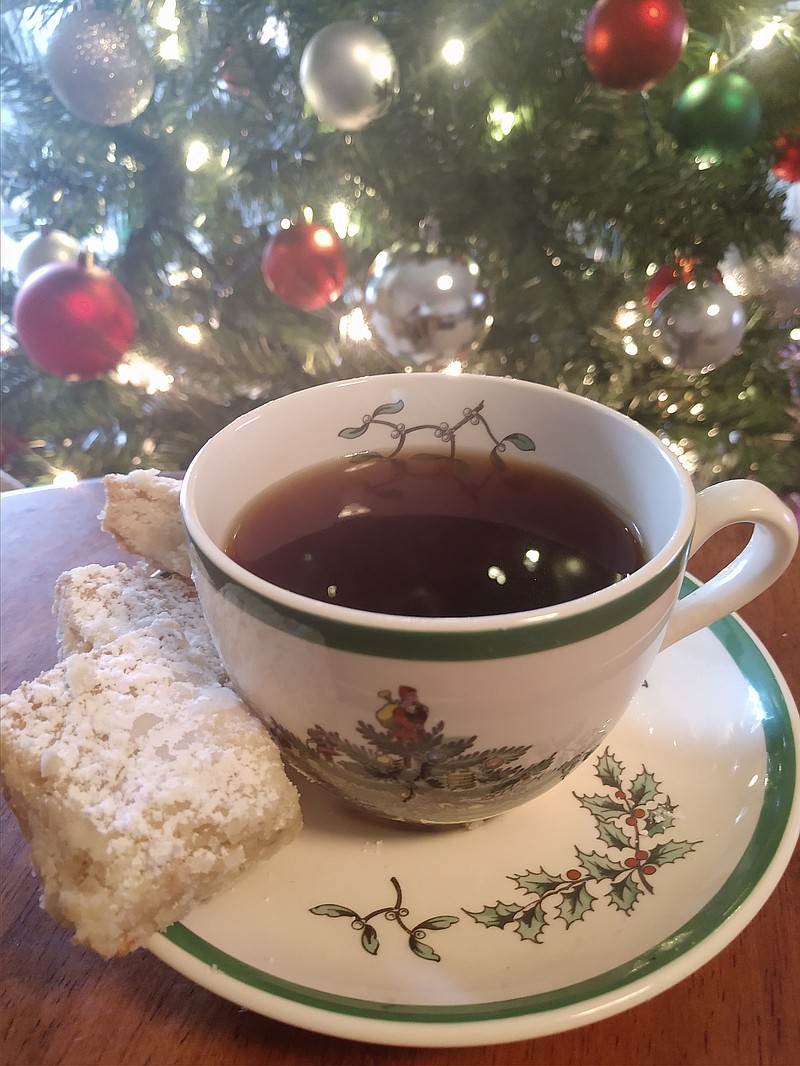Betty Webster, one of my mother's dearest friends, made the best shortbread I've ever had. Every year at Christmas, she gifted my family with a tin filled with her shortbread, each piece cut into squares just big enough to pop in my mouth as I reached for another.
Deceptively simple with only butter, sugar, flour and eggs - none of which, on their own, are horribly unhealthy, but when combined, they can behave deviously, tempting our palates beyond measure.
Shortbread hasn't always been the food of the gods. Its earliest incarnation, back in medieval days, was nothing more than a hard biscuit made from dough left over from the day's bread-baking. Through the years, yeast was replaced with pure butter, and shortbread became a food that ordinary people could only enjoy on special occasions, such as Christmas. Thus, the tradition continues, and though butter is no longer the luxury food it once was, we still see more shortbread this time of year than any other.
With just just a few ingredients, shortbread is very simple to make, but there's just one trick to ensure shortbread that melts in your mouth. Don't overmix. The confection is called "short" because very little mixing of the butter and sugar is necessary. This prevents gluten from forming and the dough getting tough. Finally, don't overbake. Take the shortbread out of the oven as the edges begin to brown; otherwise, you'll have a dry cookie, not one that melts in your mouth as shortbread should.
The only thing I changed in Webster's recipe was the sugar. Powdered sugar, rather than granulated, as she used, makes for a very tender, almost fall-apart cookie. Make sure you bring the shortbread to room temperature after removing it from the oven. Some recipes call for using the best butter you can find; others, the cheapest. I've tried both and found the latter is true. Whatever kind of butter you have will work. And if it's unsalted butter, add about 1/4 teaspoon of salt to the batter.
Shortbread will last about a week in a covered tin at room temperature. But it freezes well, too. Just wrap it in aluminum foil and seal in freezer bags, and it will stay good for about a month.
Betty Webster's Shortbread
*2 cups all-purpose flour *1 cup powdered sugar *1 cup cornstarch *1/4 teaspoon salt, if needed *2 sticks salted butter, softened *Additional powdered sugar for dusting Heat oven to 375 degrees. Sift together flour, sugar, cornstarch and salt. Work softened butter into flour mixture by hand. Transfer to food processor or mixer, and pulse or blend a few seconds until some of the crumbs start to come together. Don't overprocess; the dough should be somewhat crumbly. Turn the dough onto a floured surface, and knead until it comes together. Press dough into an even layer in a very lightly greased 9- by -13-inch pan. Bake for 30 to 40 minutes or until edges begin to brown. Cut into squares, and sprinkle with additional powdered sugar.

